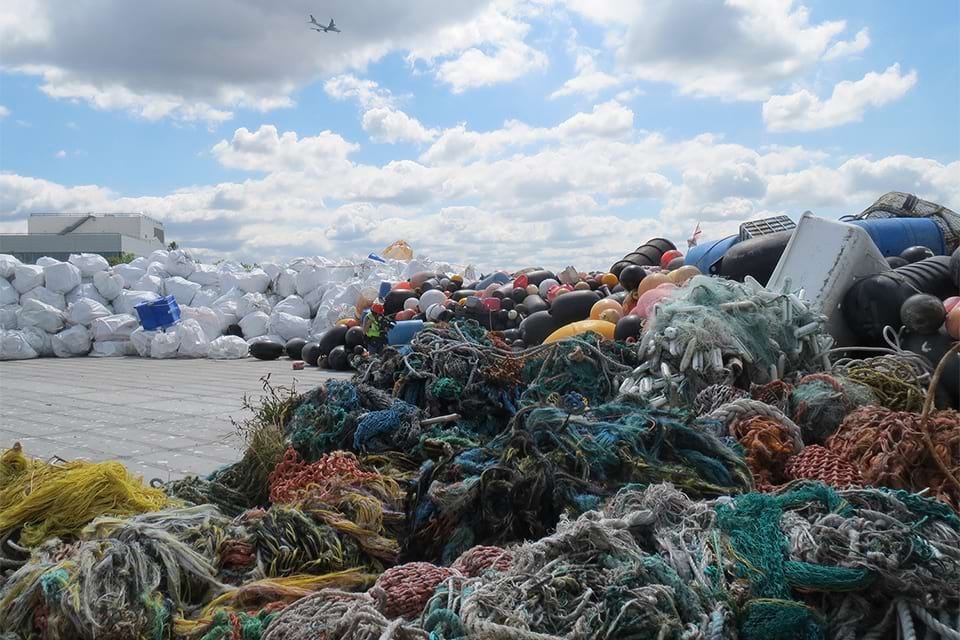In Coastal Pollution News…
A football-field sized barge carrying nearly 3,400 super-sacks of marine debris from remote and rugged beaches from Alaska and British Columbia docked at the Waste Management facility in Seattle, Washington (Credit: NOAA).
Each year, billions of pounds of trash and other pollutants enter the ocean. Where does this pollution come from? Where does it go? Millions of tons of trash and other debris enters our ocean each year, and thousands of oil spills occur in U.S. waters each year. Pollution from other sources, like fertilizer from our yards, builds up in waterways and causes explosions of algae growth, which can be harmful to the environment and even toxic to humans.All of that pollution really adds up. Some materials end up on our beaches, washed in with the waves and tides. Some sink to the ocean floor, some are eaten by marine animals that mistake it for food, while some drifts throughout the ocean. Oil spills, marine debris, and harmful algal blooms all come from different places and affect our environment in different ways. While these aren’t the only types of pollution that occur in coastal environments, these are some of the most common and significant.In this resource, you can explore three major types of coastal pollution: oil spills, marine debris, and harmful algal blooms. These pages present the sources, impacts, and solutions that scientists and others are using to address each of these types of pollution. The content is aligned to the Next Generation Science Standards, as well as the Ocean Literacy Principles. For information on general, nonpoint source pollution, check out the Nonpoint Source Pollution Tutorial.
About CASE Consultants International:
CASE Consultants International specializes in providing expert guidance in climate adaptation, resilience planning, and environmental justice. CASE is dedicated to helping organizations and communities navigate the complexities of climate change to build a sustainable, resilient future.

